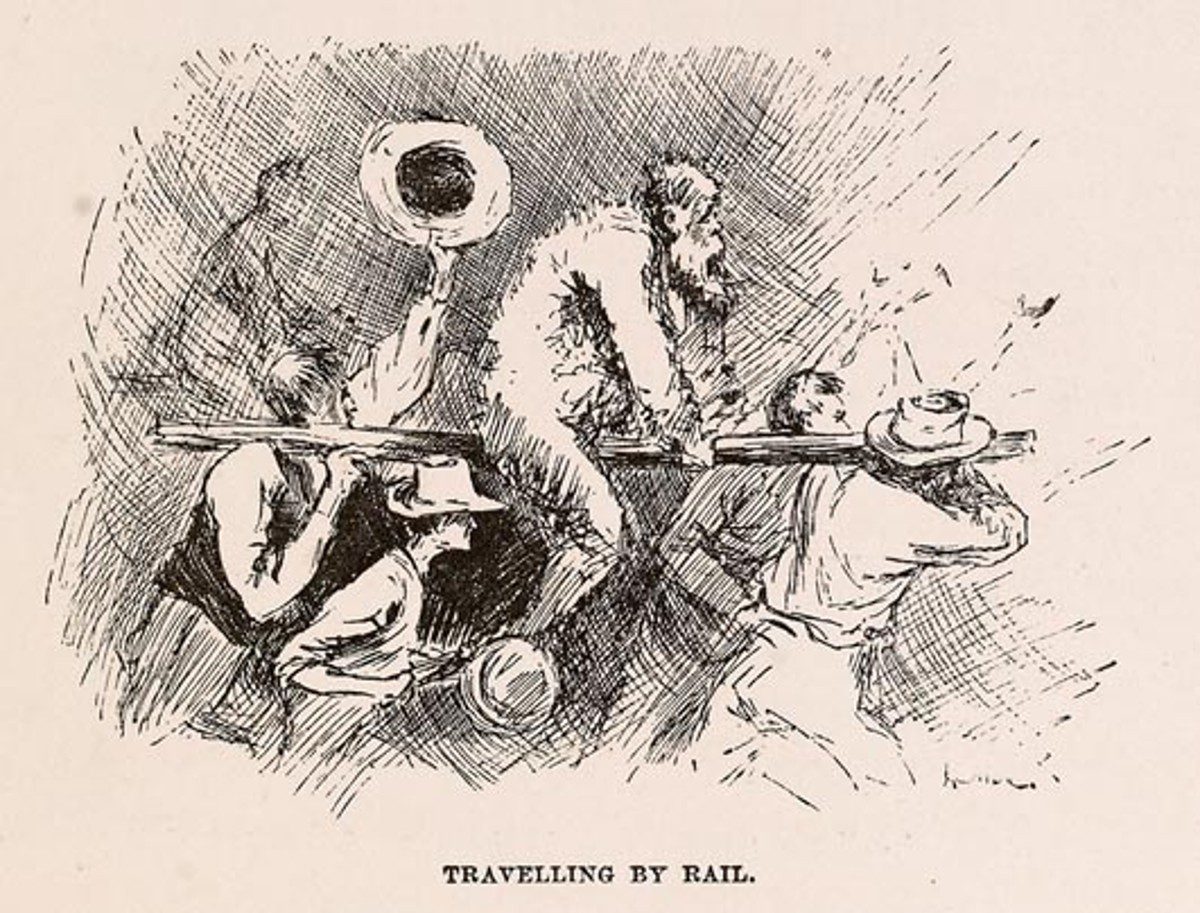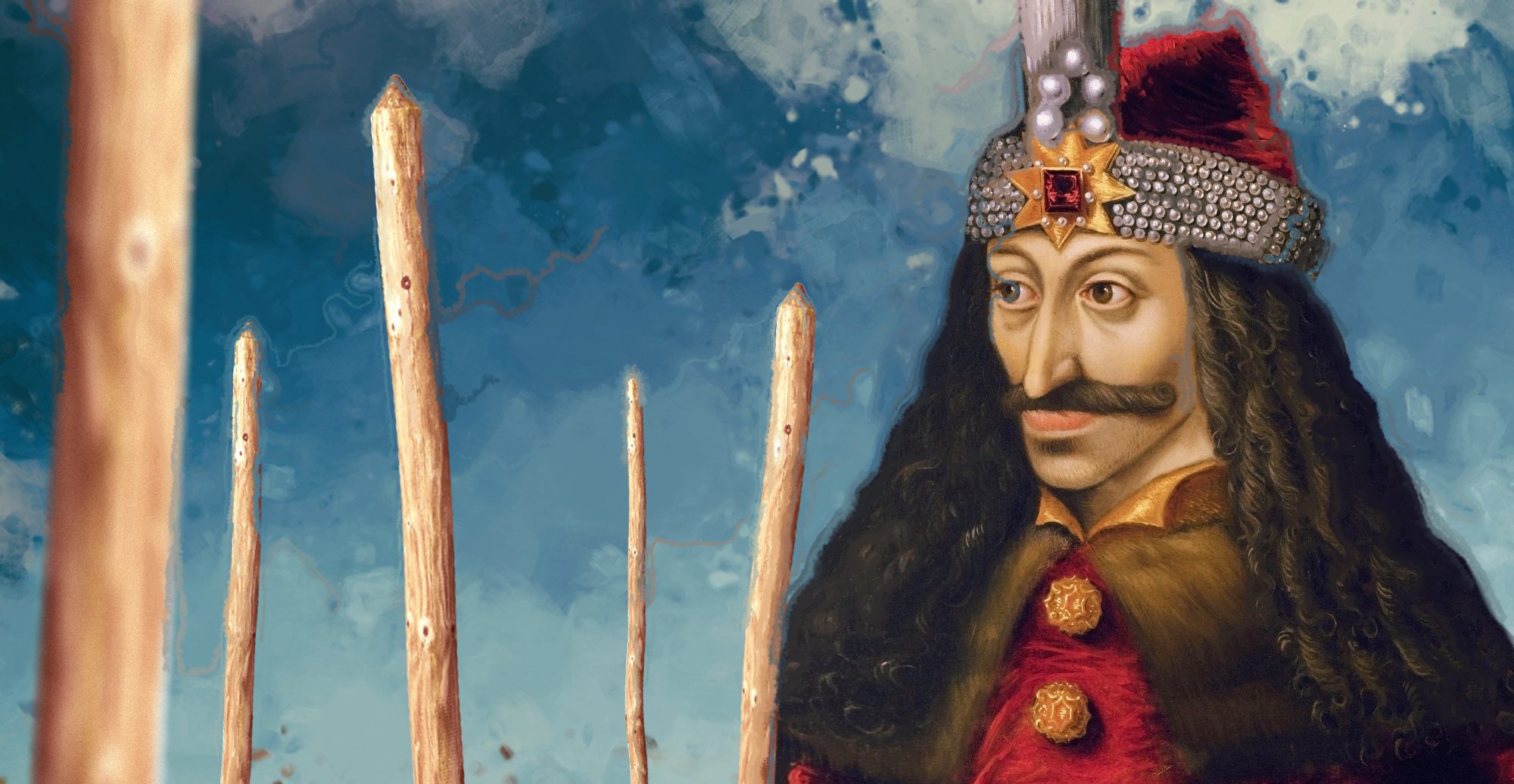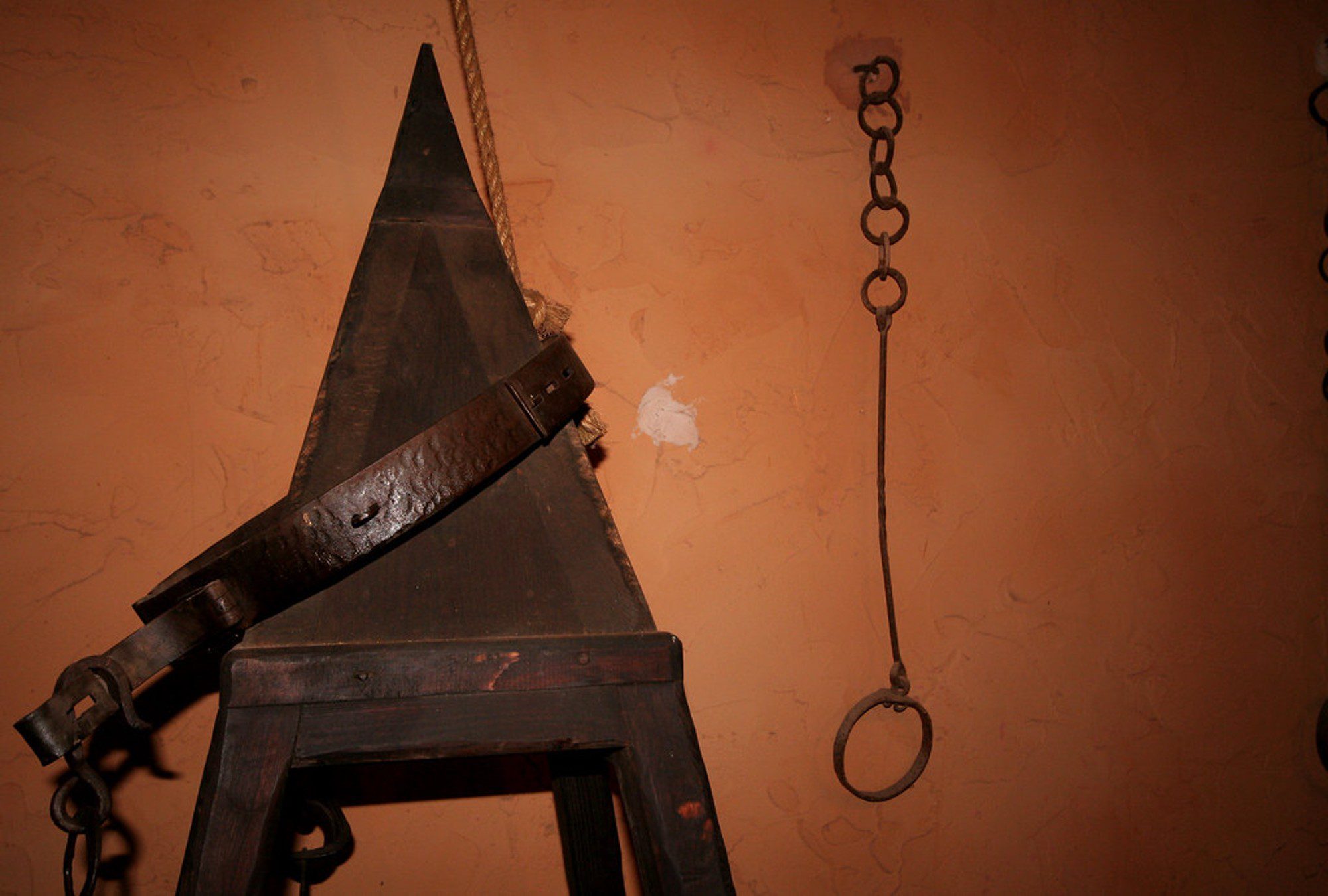The Pear of Anguish, the Brazen Bull, the Rack, the Chair of Torture, and other instruments of the most heinous torture were employed during the Middle Ages. The Judas Cradle, also known as the Guided Cradle and the Judas Chair, was one of the cruelest and most often employed devices.
The Judas Cradle, which was most likely devised by the Spanish in the 16th century, was a pyramid-shaped wooden structure onto which the sufferer was pierced through by the top of the pyramid. It would be impossible for the weight to be moved by tying the person’s wrists and legs. To intensify the suffering, anytime the victims’ feet moved, the victims’ feet were frequently linked to one another.
Used as a torture device during interrogations, the victim would be forced through their anal orifice if they were male and vaginal orifice if they were female. The agony might last from a few hours to several days. However, the period varied from accused to accused based on things other than their capacity to endure the pain. It was primarily applied to religious matters to elicit confessions, but it was also applied to political opponents during the time.
Another contraption comparable to the Judas Cradle was popular in Prussia, but it aimed to reprimand disobedient troops. This particular contraption, known only as the “horse,” was made expressly to harm the genitalia.

Also Read: The Haunting of the Hoosac Tunnel: How The Tale Started?
The Wooden Horse
In the later years, Judas Cradle donned many forms, one being the ‘horse’. A triangular object with one end facing upward and supported by a structure like a sawhorse is the first type of wooden horse. The victim is forced to balance on the triangular “horse.”
To protect the sufferer from falling off, weights or extra shackles were frequently added. In the American colonial era and later, a punishment akin to this known as “riding the rail” was employed. In this situation, the victim was frequently punished by being tarred and feathered, and hauled through the town. The person could sustain a crotch injury, rendering them unable to move without suffering.
In the 18th and 19th centuries, riding the rail was a common punishment in the United States, when the guilty was forced to be balanced by carriers while straddling a fence rail. The individual was then paraded through town or driven to the city boundaries and abandoned by the side of the road.
Riding on a rail was often a kind of extrajudicial punishment imposed by a mob and was meant to demonstrate community unhappiness with the offender so that the offender either complied with the crowd’s demands or departed the town. Brought to public notice by O Brother, Where Art Thou?, a 2000 film, this is the latest modification on the Judas Cradle.
Also Read: Ed Gein: The Insane Butcher Of Plainfield
Impaling And The Like
The Judas Cradle was an instrument primarily to impale and was an improvision of older methods of impalement. Impalement is a kind of punishment and execution that involves forcing a component such as a spike, spear, or hook through a person’s body, frequently completely or partially through the torso. It was viewed throughout many cultures as a highly cruel type of death punishment and depicted in myth and art. It was employed mainly in reaction to offenses against the state. During times of conflict, impalement was frequently employed to put down uprisings, punish accomplices or traitors, and deal with misconduct among the soldiers.

Vlad III, popularly known as Dracula (Yes, The Dracula) Voivode of Wallachia, is recognized as the prime significant figure to favor this type of death during the late medieval era in the 1400s. He was so renowned for its widespread use that he acquired the moniker “Vlad the Impaler,” among many others.
He retook the power of Wallachia in 1456 after being orphaned, deceived, thrown into exile, and hounded by his foes. He dealt ruthlessly with his opponents, particularly those who had previously forsaken his family or benefitted from Wallachia’s calamities. Despite the employment of several techniques, he is best famous for using impalement.
These contraptions, much like the Judas Cradle, were inserted through the rear ends of the body, but unlike the former, these did not tear open the orifice but were administered by doctors to avoid important organs and make the pike come out from the throat of the sufferer. More died from starvation by this punishment while having to endure insufferable pain. Thank goodness we are past these horrors in the 21st century.
Also Read: Unit 731: The Atrocities Of Japan During World War II




